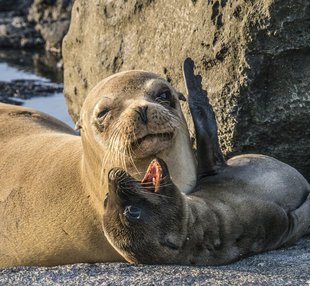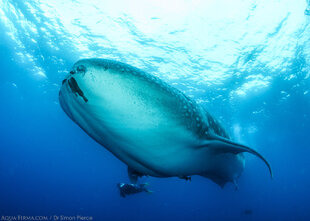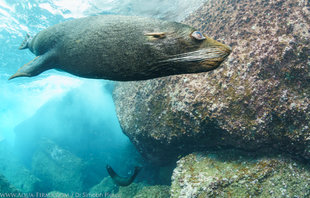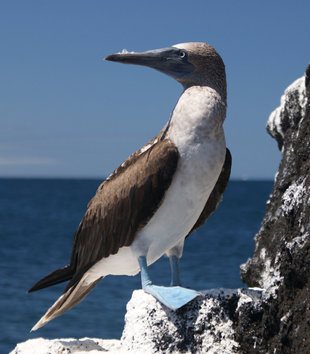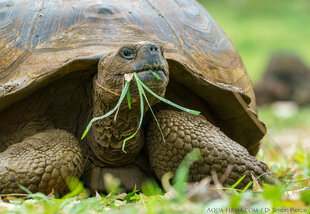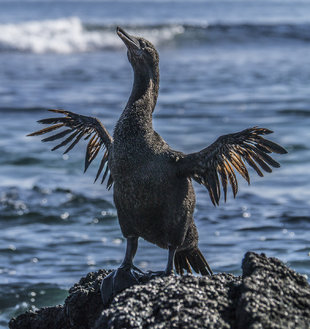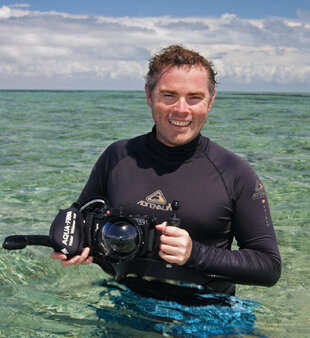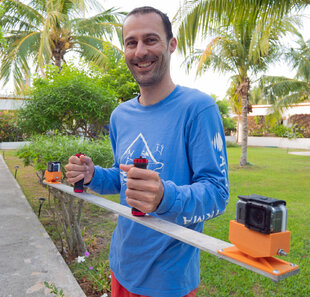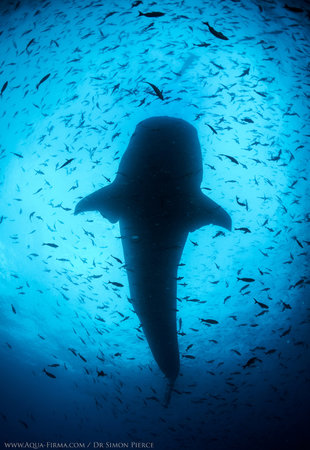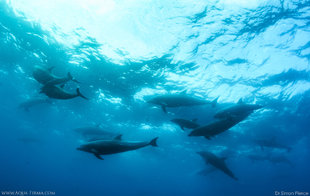Aqua-Firma's Shark Research Insights and Photography Dive Liveaboard expeditions, are hosted by some of the world's foremost Whale Shark researchers. In 2026 this will be co-Founder of the Marine Megafauna Foundation, Dr Simon Pierce.
These scientists conduct their work throughout the world, but the Galapagos is one of their highest priorities since it is the best place to see huge females, which can reach up to 18 metres or more in length. Joining this liveaboard will provide you with a unique opportunity to find out the very latest in whale shark research; as well as insights into other species of sharks and rays, plus local endemic species such as marine iguanas, Galapagos penguins and more. It also helps to fund the work of the Marine Megafauna Foundation, in the Galapagos and beyond.
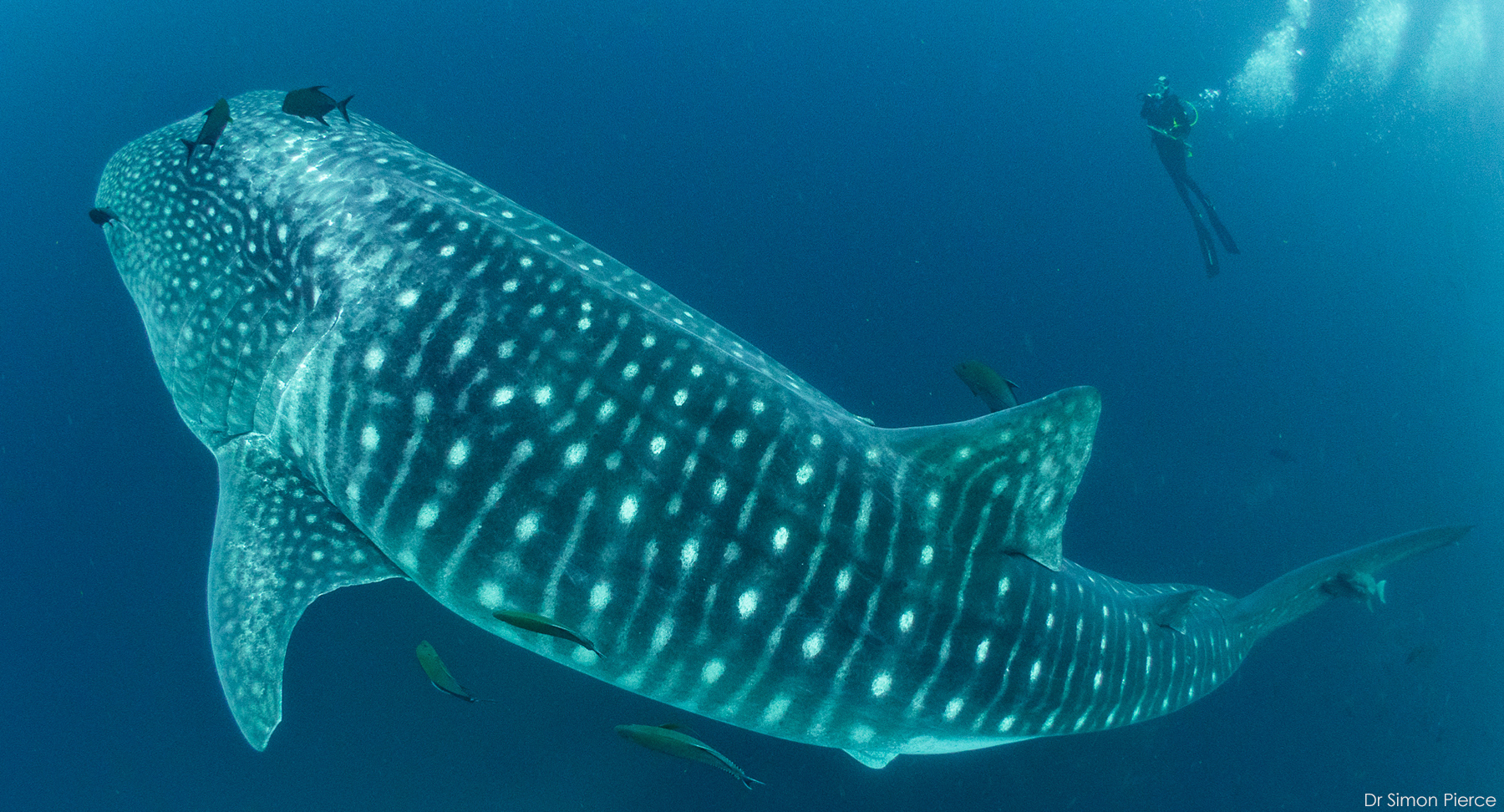
Video and Photography
All of our hosts are highly accomplished with their cameras, with Simon prioritizing stills photography. Onboard workshops will provide you with the opportunity to learn how to get the best out of your underwater camera gear; and how to use software to edit your prized images.
Liveaboard trips are the only way to reach two of the Galapagos' most important diving highlights: Wolf Rock and Darwin. These are some 16 hours across the water from the rest of the islands and it is here where you will find some of the largest schools of Hammerhead Sharks you are likely to see anywhere in the world. This is also one of the best places in the world to dive with Whale Sharks.
There is a huge amount more to see at these dive sites and others, including Giant Manta Rays, blue spotted rays, sealions, white tip sharks, Galapagos penguins and endemic marine iguanas. Our guests have even seen schools of dolphins underwater so large that they have been impossible to count in amongst the hammerhead sharks.
Best Time to Go
Hammerhead sharks aggregate in schools at Wolf Rock and Darwin throughout the year. Whale shark sightings are more seasonal. You are very likely to see whale sharks between June and October. Giant Manta Rays are most commonly seen during the warmer water months of November to June.
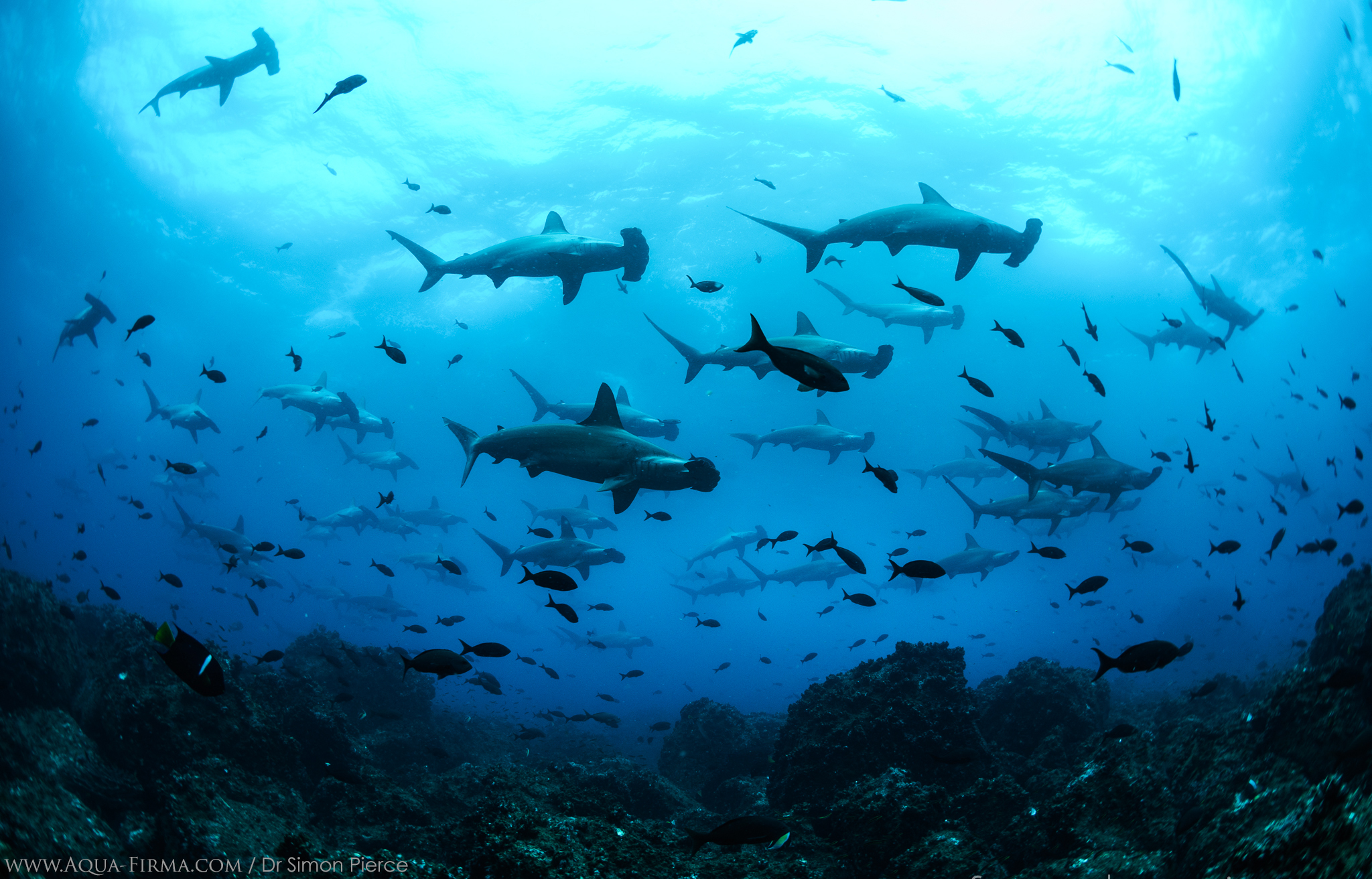
Galapagos sea temperatures are always cooler than you would usually expect on the Equator. They are at their warmest around the New Year with sea surface temperatures reaching about 23oC (73oF). They reach their coolest in August when sea surface temperatures drop to about 18oC (64oF). In both seasons, thermoclines can take temperatures down by as much as 5oC (9oF). Typical underwater wear would be a 7mm wetsuit with hood, but the ability to layer is useful since temperatures can vary considerably between the warmer north and colder south of the island group.
The Boats
Our liveaboards are 16 passenger motor yachts with combinations of twin, double and triple cabins with ensuite bathrooms. This experience will be on the Humboldt Explorer. Divers will head out in two separate Rigid Inflatable Boats (RIBs). For photographs, please click on the Itinerary tab above.
Prior Experience Required
Diving conditions in the Galapagos are not the easiest. You will need to be PADI Advanced or equivalent to join this trip, with about 50 dives or more experience and some of those dives conducted in the months leading up to the trip so that you are fully prepared. Preparation is something we can discuss and assist with in advance.
Seeing more of the Galapagos & Ecuador
As a fully bonded Above & Below Water Travel company, Aqua-Firma can arrange flights, hotels, naturalist exploration of the islands, Andes and Amazon beyond. Whether you want to get to and from this liveaboard trip as quickly as possible, or explore more of South America, Get in Touch for expert assistance.
Itinerary
Galapagos Shark Research Insights & Photography Itinerary (8 days / 7 nights)
All of our liveaboard trips follow an itinerary agreed with the Galapagos National Park and are accompanied by a natural history guide trained by the Charles Darwin Research Station. The precise itinerary is subject to change without notice according to National Park requirements, prevailing weather conditions and the decision of the captain.
Day 1 (Monday) – Arrival
AM: Arrival, Baltra Island
Upon arrival Baltra, travellers pass through an airport inspection point to make sure that no foreign plants or animals are introduced to the islands, and to pay the park entrance fee of $200 (unless it has been prepaid). A guide will meet you, help you collect your luggage and escort you on a short bus ride to the harbour.
Day 2 (Tuesday) – North Seymour
AM: North Seymour Island
Today you will have an equipment check and 2 dives.
At North Seymour Island, one of the most popular in the archipelago, you will be able to engage in a few interesting dives where you can see Eels, Starfish, cleaning stations with visiting Sharks, like Hammerheads, and an variety of rays, including Spotted Eagle, Manta and (rarely) Golden Cownose Rays. Pufferfish are also sighted regularly at this location. The currents at this dive site are known to be fairly strong, so it is recommended to have experience diving with currents before taking part in this dive.
PM: North Seymour Island Hiking
After your dives, you will walk the islet. North Seymour is teeming with birdlife. An easy circular path takes you through the archipelago’s most extensive colonies of blue-footed boobies and frigate birds. At the beginning of the breeding season, adult frigatebird-males blow up their vivid red pouches (gulas) to impressive football-sized balloons. This is one of the few spots where you can compare the magnificent and the great frigatebird breeding next to each other.
You are likely to come across several land iguanas on North Seymour and the coast can be a good place to spot Galapagos sealions.
In the evening, the ship will begin its long transit to Wolf Island for the next stages of the itinerary.
Day 3 (Wednesday) – Wolf Island
You will have 3 daytime dives at various dive sites around Wolf Island and a possible night dive. The dive sites at Wolf Island are listed below though you may not visit all of these over the week.
Anchorage, Wolf Island (Night Dive)
Anchorage is the only dive site located on the west coast of Wolf Island. Here, the strange walking Red-Lipped Batfish can be seen 20 m (70 ft) deep on the seabed. Though this animal is mainly active at night and is attracted by your diving lights, this probably won’t be your only time seeing it.
La Banana, Wolf Island
La Banana, also known as North Islet, has a sheer wall whose shape resembles that of a banana and is dotted with caverns, tunnels and other interesting rock formations. This dive site normally has great visibility and equally good marine life, with highlights including Galapagos Sharks, Hammerheads, Manta Rays and Green Turtles.
La Ventana Islets, Wolf Island
At La Ventana Islet (Window Islet in English), there is diverse marine life. One of the biggest highlights here is the Red-Lipped Batfish, which walk around on the sea floor. Hiding in and swimming around the complex rock formations are many other sea creatures, such as Moray Eels, Barracuda, Dolphins, White-Tip Sharks and Hammerheads. Whale Sharks can even be seen here between May and November.
Shark Bay, Wolf Island
Shark Bay is on the east side of Wolf Island and is shallower than most other sites around it but one of the most memorable due to high Whale Shark traffic which gave the site its name. There are also local cleaning stations here where you can see visiting Hawksbill & Pacific Green Turtles.
The Landslide, Wolf Island
This is one of the best dive sites of Wolf Island, with hundreds of Hammerhead Sharks circling around or heading against the current in some seasons. This drift diving site follows a boulder slope underneath the partly collapsed east cliffs of the islet leading to a hangout between the boulders where you can see Requiem Sharks, pelagic schools. In hotter seasons, Pacific Green Turtles, Spotted Eagle Rays and, sometimes, Mobula Devil Rays and Giant Oceanic Mantas can be seen here too.
The Pinnacle & the Caves, Wolf Island
At this site are some of the archipelago’s most interesting caves. Located north of Wolf Island, there are 4 main caves which penetrate the pinnacle, normally easily accessible with cave entrances at 15-21 m (50-70 ft). A sandy ledge runs along the wall beneath the entrances to each cave, where it is possible to see Hawksbill and Green Turtles gathering, schools of Soldierfish, Guineafowl Puffers, Moray Eels, Whitetop Reef Sharks, Marble Rays, Cardinalfish and Lobsters. If you have time, the cave with the largest opening can be interesting to explore. The dive here ends in the northeast corner of Wolf at a large underwater pinnacle ending just below the water’s surface. If the currents allow, you can hold on to the pinnacle and watch the marine life visible from it.
The Secret Cave, Wolf Island (Night Dive)
This dive site was formed by the collapse of large gas chambers dating back to the formation of Wolf. Along the walls which are sometimes surrounded by Hammerheads, there is an entrance to a cave with several nocturnal species like Cardinalfish, Spiny Lobsters, Shrimp, Sea Urchins, hunting Moral Eels, Pacific Green Turtles and Sea Lions.
Day 4 (Thursday) – Wolf Island & Darwin Island
AM: Wolf Island
You will have 2 morning dives at Wolf Island before beginning the transit to Darwin Island.
PM: Darwin Island
There will be 2 dives in the afternoon at Darwin Island on day 4. There are many locations here for diving, listed below, but you may not visit all of these over the week.
Arco de Darwin
Darwin’s Arch, now a pillar formation since the arch collapsed in 2021, is one of the Galapagos’ most iconic locations. The shallow reef platforms around the landmark make this a great diving spot for seeing schools of Scalloped Hammerheads. Whale Sharks can also be seen here, mostly between June and November, with females making a stop-off during their solitary migrations.
Darwin’s Theatre
This dive site is where two forked ridges pointing northeast and southeast from the reef foundation of Darwin’s Arch. Curved shelves bending around the northern branch give the appearance of a grandstand with panoramic hangouts at around 18 m / 60 ft, giving the dive site its name. There is often swarming marine life here, with Hammerhead, Requiem and Silky Sharks, Yellow-Fin Tuna, Wahoos, Bonitos, Amberjacks and large schools of fish often being common sights here.
El Arenal
This dive site brings you close to the cleaning stations of Darwin Island, where Sharks, Turtles and Jacks regularly visit to be freed from parasites by the resident Barber Fish and King Angelfish. The busiest area here is the sandy slope in front of El Arenal portal. When the surge isn’t too strong, being dropped off here allows you to come face-to-face with Scalloped Hammerheads and resting Pacific Green and Hawksbill Turtles. As you swim further out, you can see the sloping shelves of rubble dropping into a deep gully, with the upper edges offering hideouts for Hammerheads. Other highlights here, depending on the season, include Whale Sharks, Bottlenose Dolphins, Mobula and Devil Rays and Giant Oceanic Mantas.
Day 5 (Friday) – Darwin Island
There will be a further 4 dives at sites around Darwin Island today – 2 in the morning and 2 in the afternoon.
Day 6 (Saturday) – Wolf Island
You will get a further 3 dives at Wolf Island, all in the morning, before beginning the 20+ hour transit to Cousins Rock. During this time, you can make use of the relaxation spaces and entertainment facilities onboard, such as looking out for wildlife on the sundeck as you move through the archipelago.
Day 7 (Sunday) – Cousins Rock & Highlands / Ayora Port / Darwin Station
AM: Cousins Rock, Santiago Island
You will have 1 or 2 dives at Cousin’s Rock on your 7th day of the liveaboard depending on when you arrive from your long transit. Cousin’s Rock dive site is characterised by its sloping rock formation which is home to many reef-dwelling marine animals such as Seahorses, Octopus, Sharks, Sea Lions and Green Turtles.
PM: Highlands, Puerto Ayora & Charles Darwin Research Station, Santa Cruz Island
Lunch will be served as you transit to Santa Cruz where you will visit the Highlands by bus. The road to the highlands leaves from Bellavista, a small village located a 15-minute drive from Santa Cruz’ main town of Puerto Ayora. The road passes through the Galapagos’ most productive agricultural zone, up to the National Park boundary. We find Miconia vegetation at this altitude, changing to the Fern and Sedge zone as we ascend further. With clear weather, we can enjoy beautiful scenes of rolling hills and extinct volcanic cones covered with grass and lush greenery all year round. In the Highlands, you will be able to see Galapagos Giant Tortoises as they graze in freshwater ponds and there will be a diversity of birdlife rarely found in the lowlands.
After the Highlands visit, you will go to Puerto Ayora and Charles Darwin Research Station. Puerto Ayora is the largest and most developed town in the Galapagos Archipelago. There are countless opportunities for food and gift shopping here and the town is even home to the Charles Darwin Foundation and the Galapagos National Park. Tortuga Bay is easily accessible from the town where you can see Marine Iguanas, Galapagos Crabs, White-Tip Reef Sharks and the Galapagos Tortoise.
Although the great majority of Galapagos visitors come to the Charles Darwin Research Station to observe and appreciate natural wonders, it is also interesting to learn how the protection and conservation of the islands are carried out. The main attractions are the National Park information centre, the Van Staelen Exhibition Hall, the Breeding and Rearing Centre for young tortoises, and adult Galapagos tortoises in captivity.
You will have your own dinner in the town in the evening before returning to the boat at 8:30 pm.
Day 8 (Monday) – Departure
AM: Departure, Baltra Island
Your guide & some crew members will go with you to Baltra where you will board the airport shuttle. Your guide will remain with you through the check-in counters & departure hall.
Dates
US$ 5,990
hosted by MMF co-Founder & Director Dr Simon Pierce
Included
All meals & accommodation onboard
All scuba diving
Between-dive snacks
Towels, linens, etc.
Use of tanks, weights & weight belts
Air fills
Transfers within the Galapagos
Local alcohol & non-alcoholic beverages
Not included
Galapagos National Park entrance fee ($200)
Chamber Support fee ($35)
Tourist card ($20)
Airfare to Galapagos Islands (we can arrange if you wish)
NITROX (US$150)
Dive kit rental (full kit rental US$250)
Single Supplement
No supplement if willing to share with someone of the same gender.
Cabins can be booked for single occupants for an 80% increase on shared cabin price.


